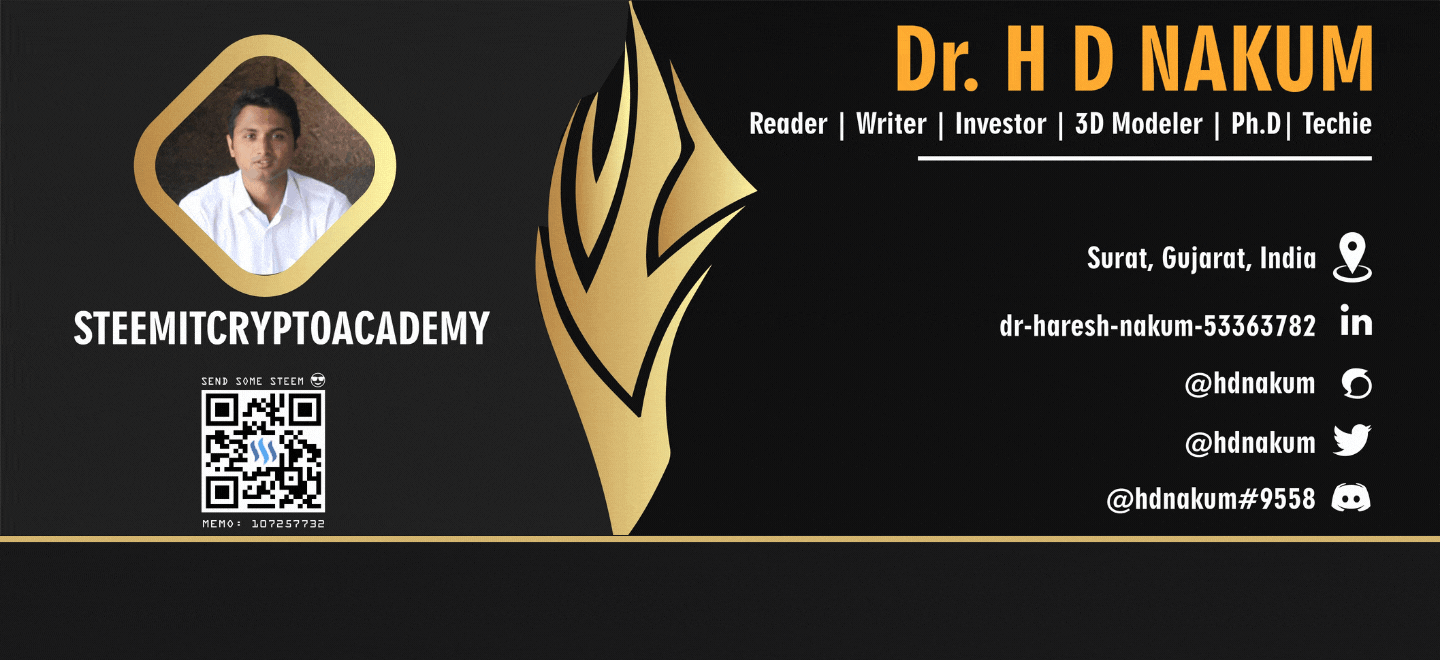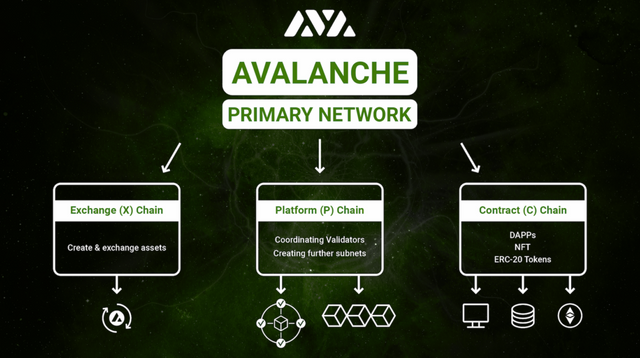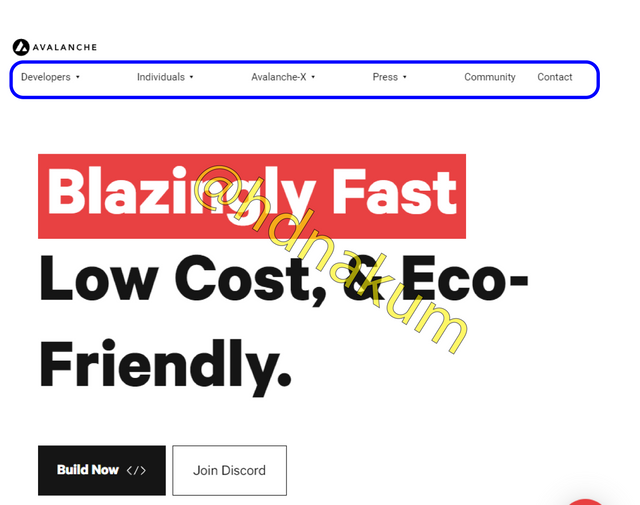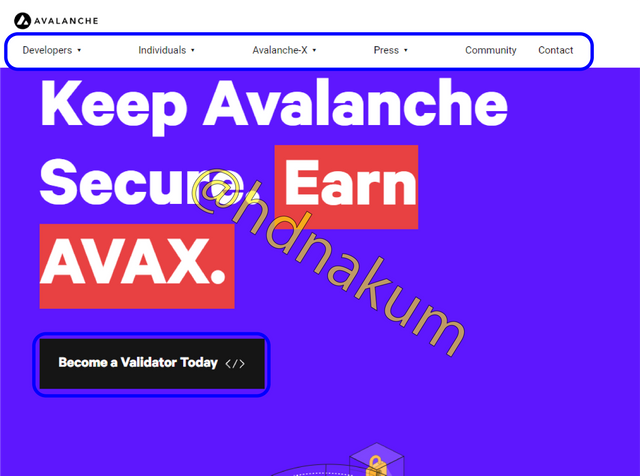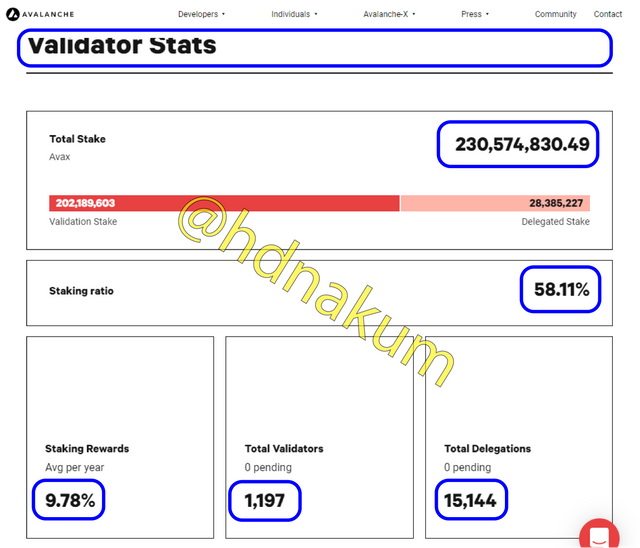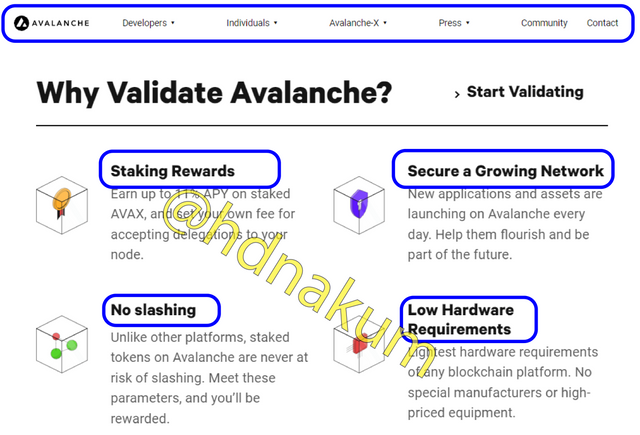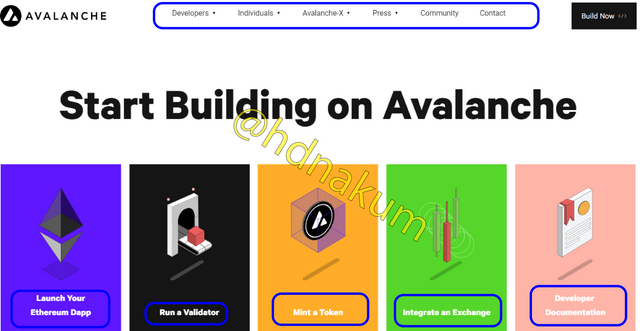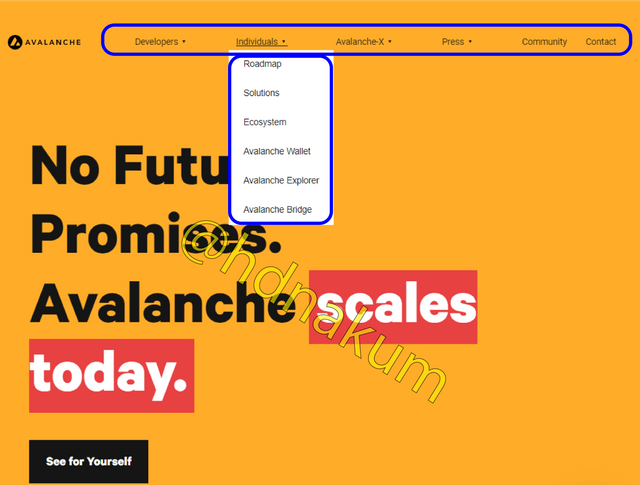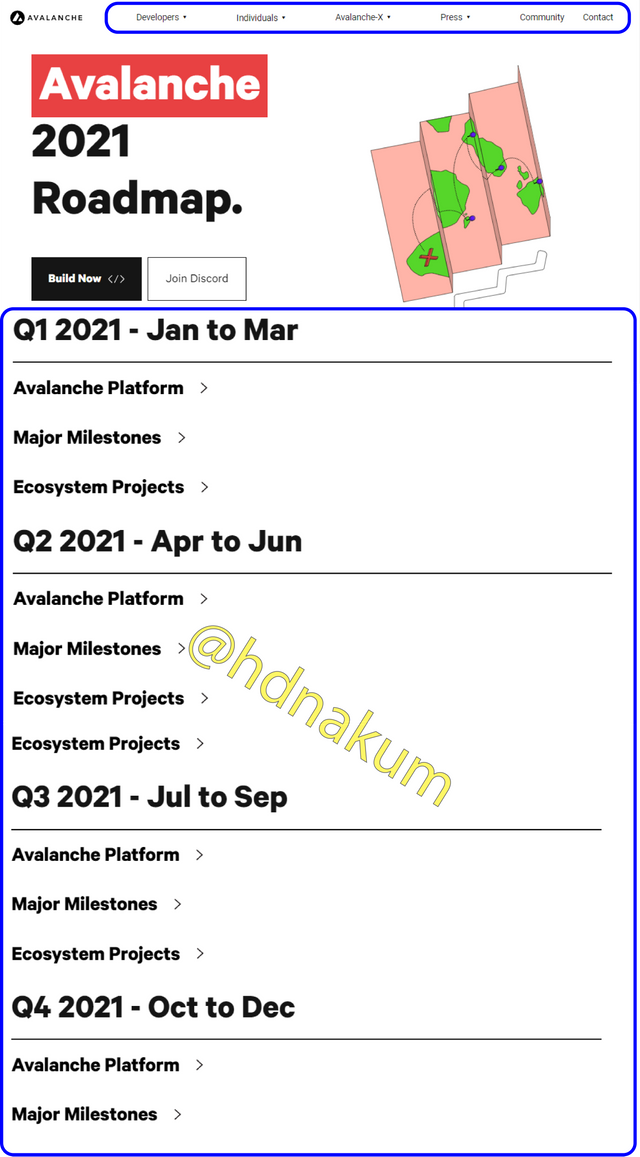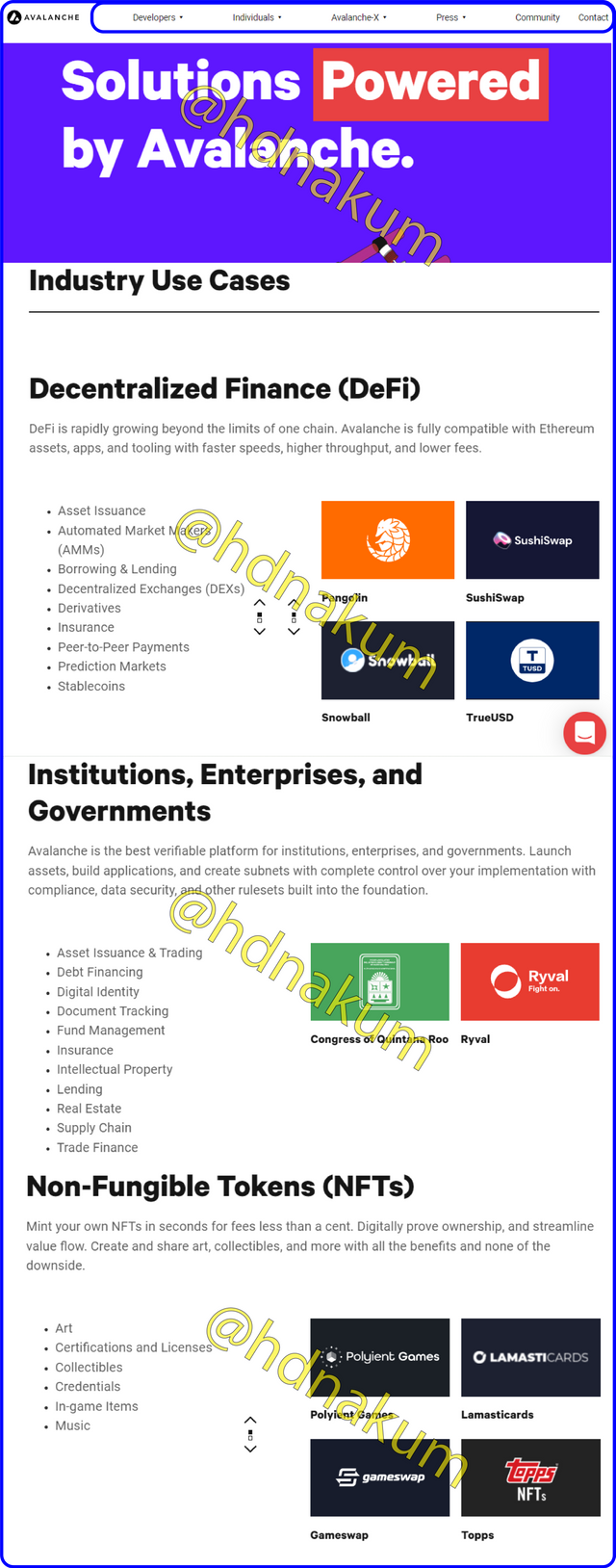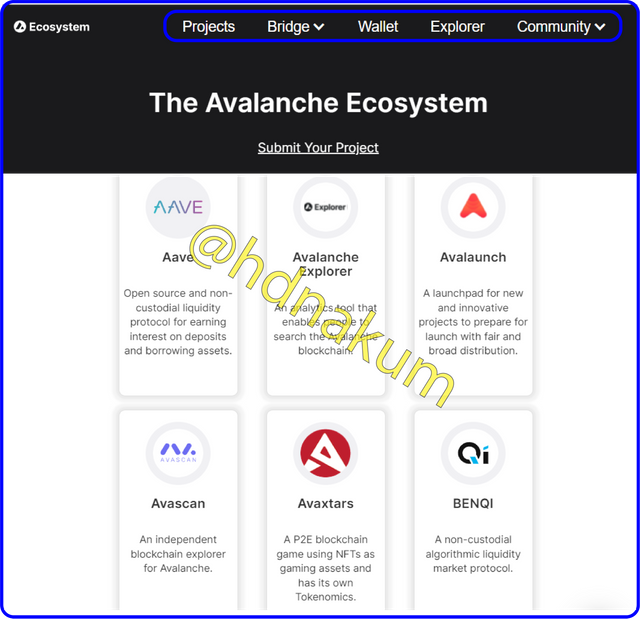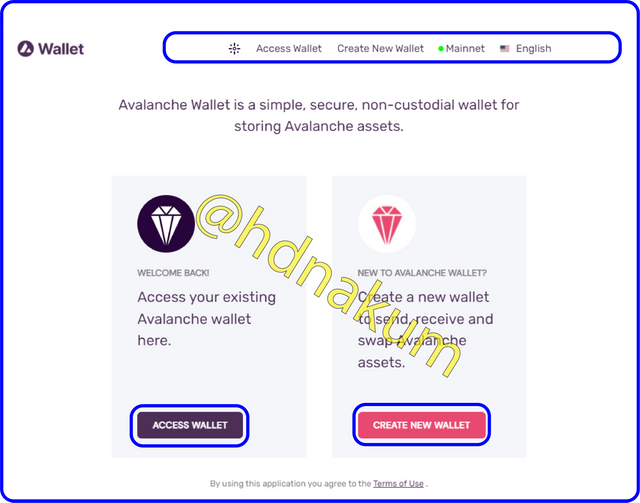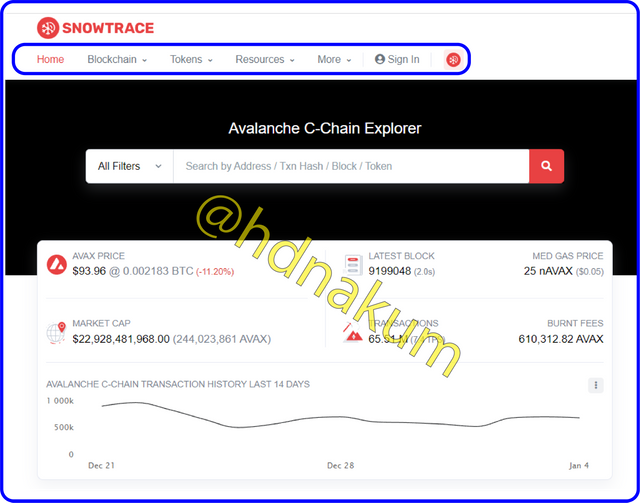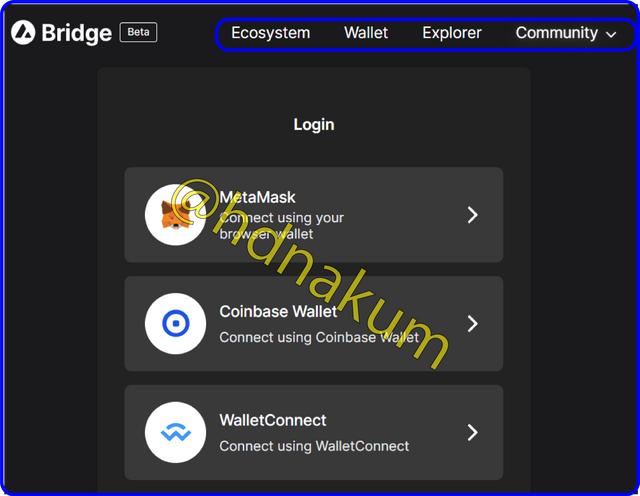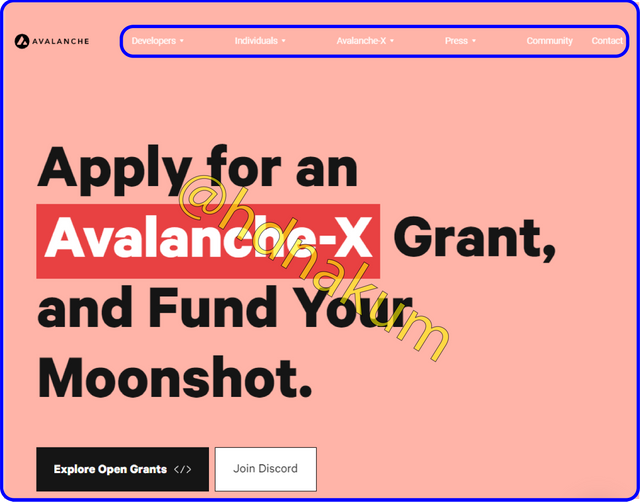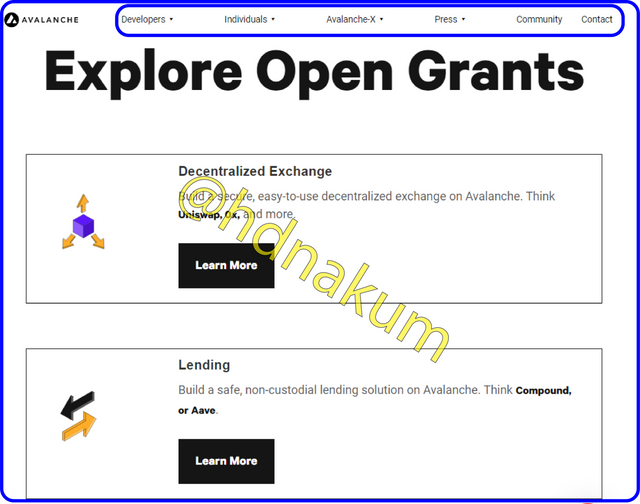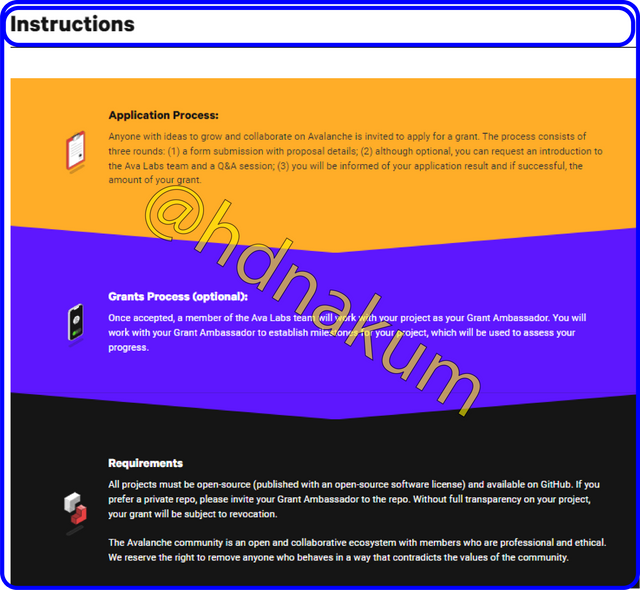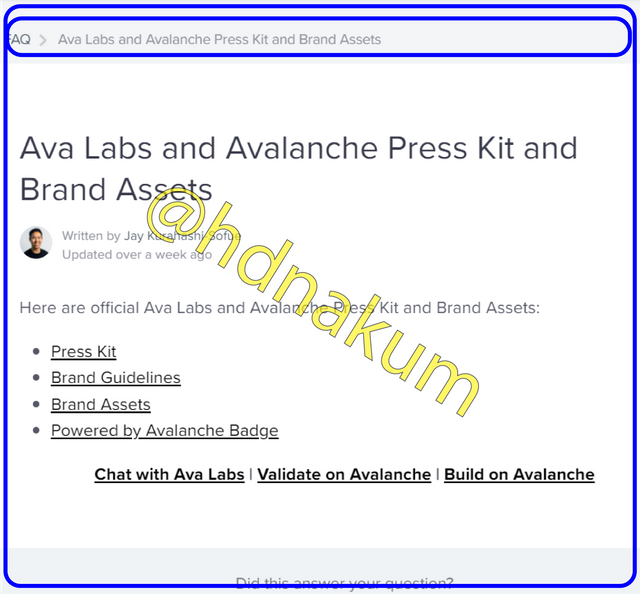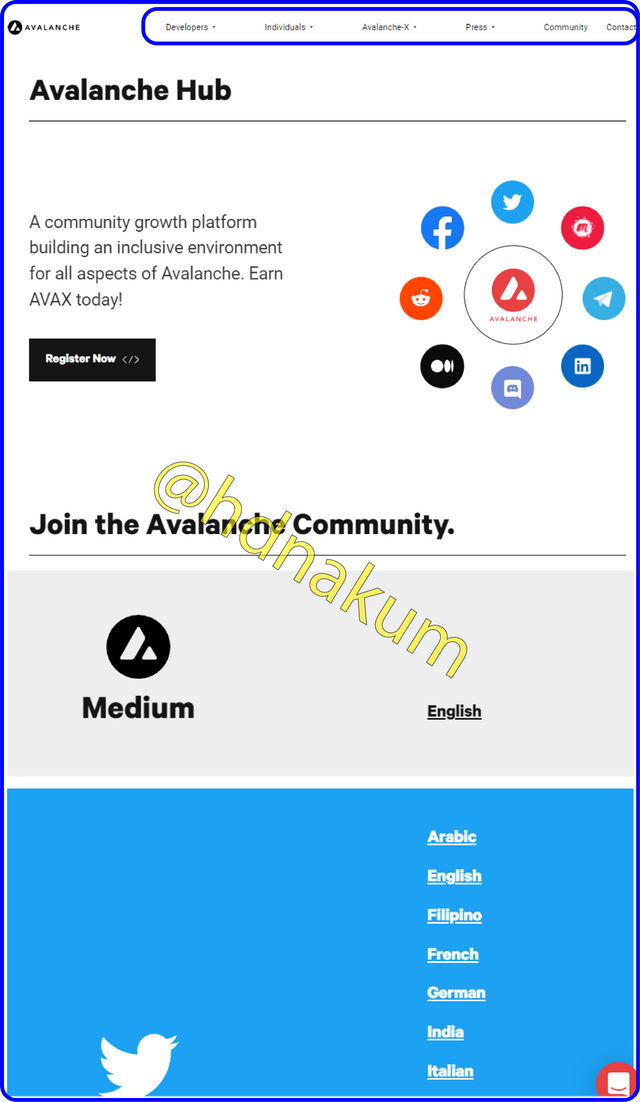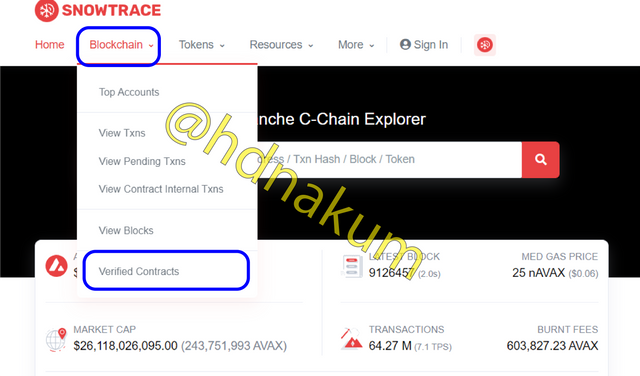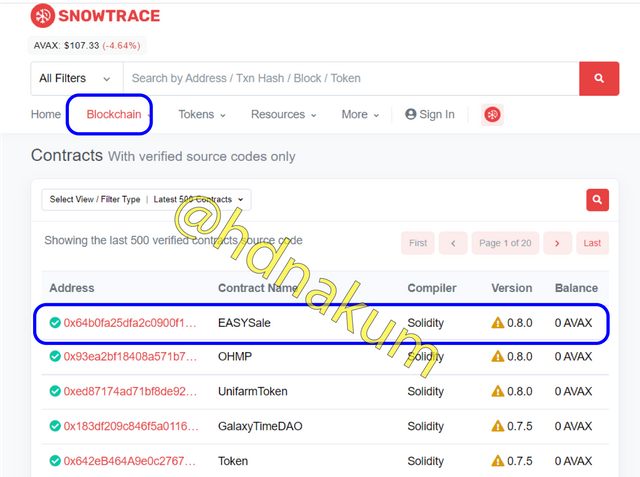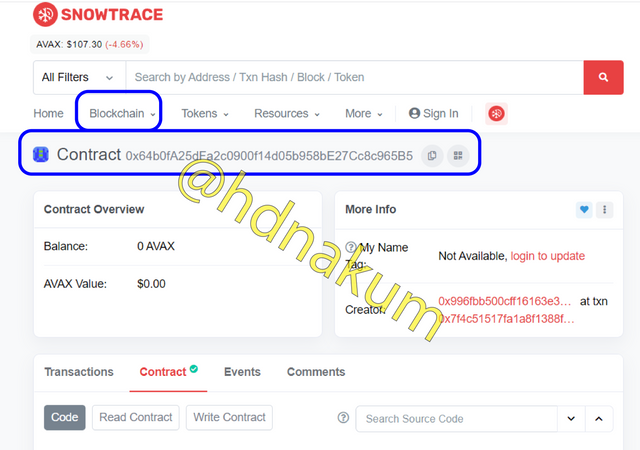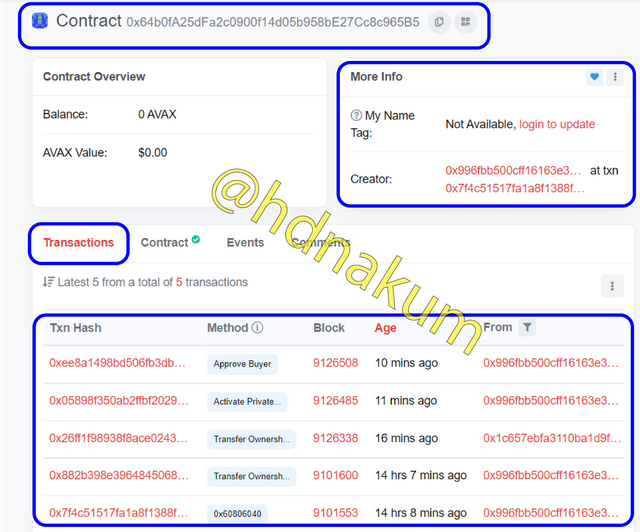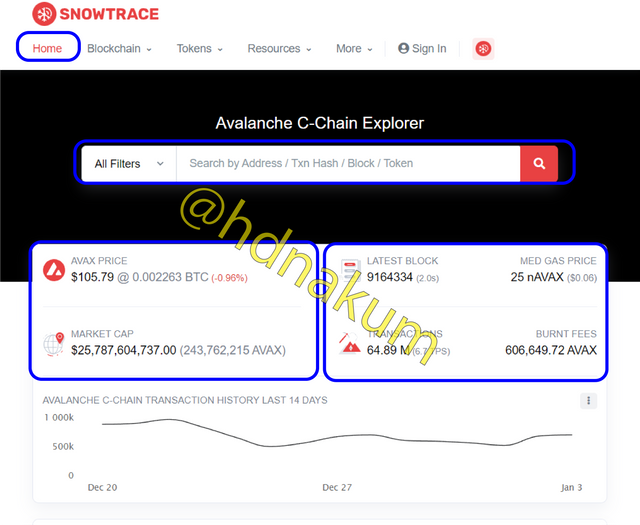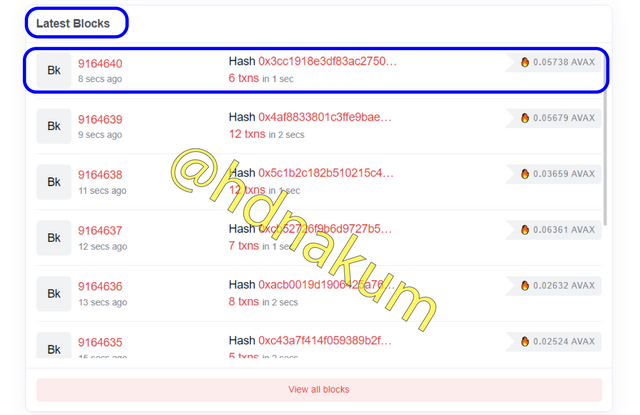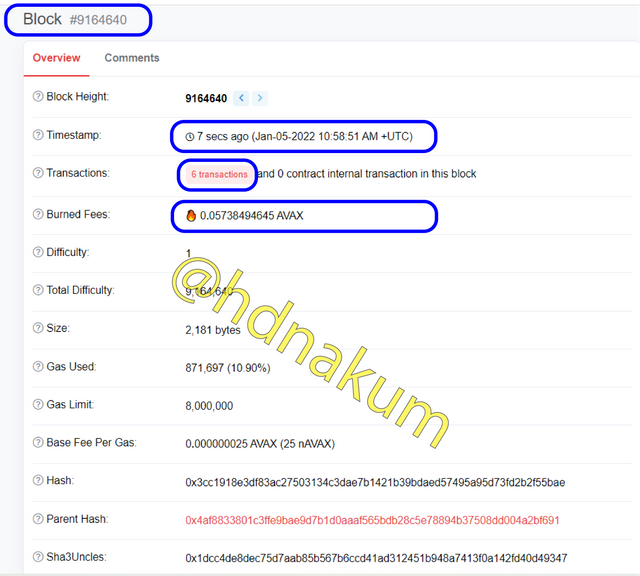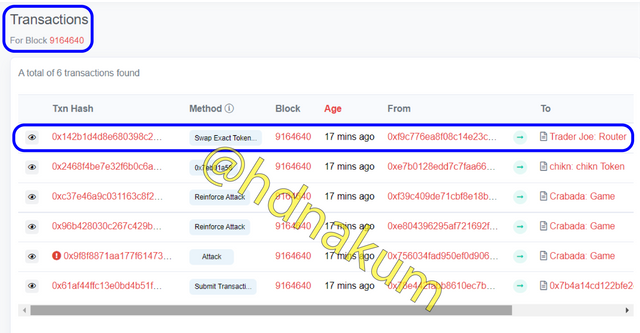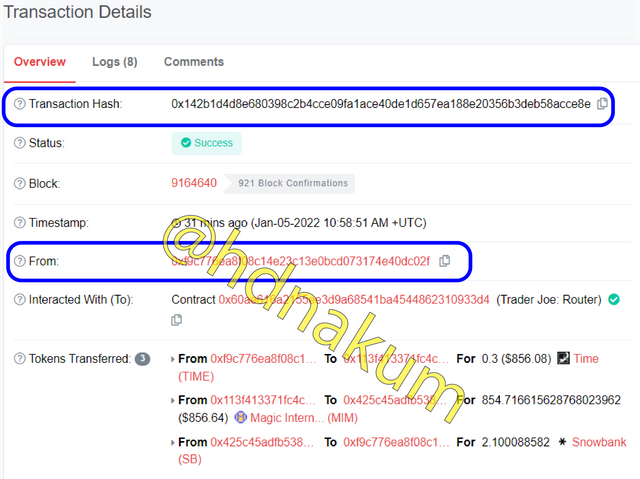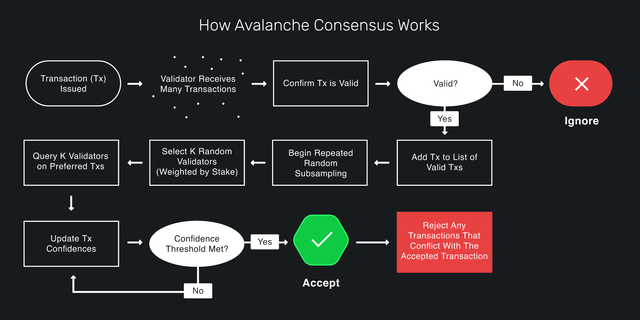Avalanche Blockchain - Crypto Academy / S5W8 - Homework post for pelon53
Hey Steemians,
Good afternoon to everyone,
Greeting to #steemitcrytoacademy -The most engaged community on the steemit platform.
I'm @hdnakum. At very first, I would like to thank @pelon53 for writing a very informative lecture on avalanche blockchain technology. Today, I will try to justify the lecture given by @pelon53 through writing homework.
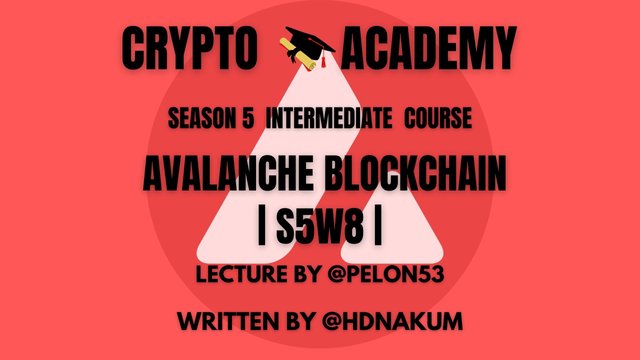


1. Introduction
Avalanche is an interoperable, smart contract enabled, Secure, Scalable (through subnets) and highly decentralised customizable Blockchain. Avalanche used the less energy-intensive proof of stake (PoS) consensus algorithm where validators validate the transactions based on their staking.
Unlike another blockchain, Avalanche's Primary network protocol is composed of three blockchains and this is the reason why Avalanche blockchain is fast, secure, scalable and truly decentralised. The avalanche's Primary network protocol has been distributed their task among three other subnets such as X-chain, C-chain and P-chain to solve blockchain trilemma. All three blockchains (X-chain, C-chain and P-chain) are validated and secured by the Primary Network. Let's just jump into the discussion of these three subnets without any delay.
2. Exchange Chain (X-Chain)
As the name itself says, The Exchange Chain is utilized as a decentralized platform for generating and trading digital smart assets that are issued and governed in the real world such as stocks, bonds.
In short, one can create and trade any digital asset on Exchange Chain. One of the smart contracts on the X-chain is the AVAX token - A native token of Avalanche Blockchain. The Transaction on the Avalanche blockchain is carried out by paying transaction fees in a form of AVAX. The exchange Chain implements the Avalanche Consensus protocol.
3. Contract Chain (C-Chain)
You can't think Blockchain without a Smart contract capability, Avalanche's C-Chain facilitates the developers to build tonnes of Dapps on Avalanche without sacrificing high security and scalability. Moreover, the Contract Chain implements the Snowman consensus protocol.
The main advantage of the C-chain is it is compatible with Ethereum Virtual machine (EVM), which means One can deploy their Dapps from Ethereum to Avalanche Blockchain with a Single Click.
4. Platform Chain (P-Chain)
P-chain is a metadata blockchain that coordinate validators. It allows the creation of new subnets and also tracks every validator on the Avalanche blockchain. The Platform Chian utilises Snowman consensus protocol, same as C-chain.
In short, it allows anyone to create any layer 1 or 2 blockchains (Subnets) atop Avalanche blockchain with any kind of Consensus protocol such as PoW, PoS, DPoS etc.


1. Homepage
To Explore Avalanche Network, one has to visit their official website Avax. network.
On the Homepage of Avax. network, You can see the features (Blue box), such as Developers, Individuals, Avalanche-X, Press, Community, Contact. You can also see below two more options Build now and join thier Discord.
We will discuss each feature one by one as listed above, to start with the developer.
2. Developers
In the developers' option, you have two options one is Validators and another is Start Building (DApps)
a) Validators
In the Validator pages, (As shown below), You can be A validator and earn passive income but first, you need to lock 2000 AVAX Minimum on the Avalanche Platform.
As we drag down, we get all the status related to stacking, total delegation, total validators, & staking rewards. Within a year, Avax Platform has over $230 M already staked and delegated.
As you drag down, you will find a piece of information about why you should stake your Avax on the network and earn 9.78% APY.
b) Start Building
On this page, you can get an idea about what you can build on Avax Network As shown below, there are five options namely, Launch your ethereum App, Run validators, Mint a Token, Integrate an exchange, Developer Documents.
When you click on any of the above options, you will be redirected to a new page that will give you a tutorial on how to do what you aim for.
3. Individuals
In the third option of Menu, there are a total of six features available namely Roadmap, solution, Ecosystem, Avalanche wallet, Avalanche Explorer, and Avalanche Bridge.
a) Roadmap
Revealing the roadmap of any project is a very essential part to attract investors. Avalanche too had launched its roadmap at the time of launching an official website. You can study the roadmap of an avalanche in detail by clicking on quarter.
As the year 2021, is already ended, this roadmap doesn't as useful as it was in 2021 because the work has been done successfully as stated in the roadmap.
b) Solution
This section explains how the Avalanche blockchain helps in DeFI and NFTs and to the institute and governance. The main benefit of this chain is it is compatible with EVM which will bring more developers from the Ehtereum blockchain as well due to high transactions fees on Ethereum.
c) EcoSystem
In this feature, one can see how many DeFI, DApps are already deployed on Avalanche Network. You can see well know DApps such as AAVE, SushiSwap and many more.
d) Avalanche Wallet
In this section, you can recover/access your wallet or can create a new wallet for storing your Avalanche chain asset.
e) Avalanche Explorer
Avalanche explorer is a block explorer that allows users to view their transactions. Same as other block explorers you can see transaction details, blocks detail and many more things that are happening across the C-chain.
f) Avalanche Bridge
To transfer your asst from Avalanche to Ethereum, you need to use a tool called Avalanche Bridge. The main utility of Bridge is One can move their digital asset across the other blockchain in just 15 Minutes.
4. Avalanche-X
This feature includes two options, one is to Explore open Grant and Submit a general proposal. Avalanche-X is funding the developers for building DApps like lending, derivatives, NFT Games.
a) Explore open Grant
Explore grants of Avalanche X allows developers to find open grants. To apply for these, you need to click on learn more to get information on how to get some grants for your dream project.
b) Submit a general proposal
In this section, developers can submit thier proposal to apply for a grant to develop their Dapp. The basic condition for getting the grant, the potential project should be open source and available on GitHub.
5. Press
In the Press section, Avalanche gives information on what development is going on on the network as well as where does the avalanche report have been published such as Coindesk, the Block, Bloomberg, DeCrypt.
a) Press enquiries
You can send an e-mail to Avalabs for any Inquiries related to the Avalanche platform by using this Press enquiry tool.
b) Press Kit and Media Asset
Press Kits and Media Assets helps users to read all the articles published about Avalanche Platform.
6. Community
The Avalanche community is super active on every social media such as Twitter, Discord, Facebook, Reddit and Telegram. Users can connect and can solve any query related to the avalanche platform.
7. Contact
In this section, as you can see, A user can contact directly to the Avalanche officials with any query related to the Avalanche network. Users just have to enter their name and email and submit with a query. Avalance official will reach to you with a solution.


To find out what smart contract has been recently deployed on Avalanche's C-chain ne has to visit the snowtrace.io first.
Once you visit the snowtrace.io, Click on Blockchain, a small menu will pop up as shown in the below image.
Now Click on Varified Contracts - It will immediately drag you to the list of recently verified smart contracts on Avalanche C-Chain.
You can see in the above image, the recent verified smart contract name is EASYsale and the contract is 0x64b0fA25dFa2c0900f14d05b958bE27Cc8c965B5. The compiler was solidity and the contract was verified on 4.1.2022. Once you click on the Address, it will lead you to the detail of the smart contract deployed.
One can also check the number of transactions related to this new verified project EASYsale, by clicking on Transaction as below.
In the right-left blue box, one can see the information related to the creator of this recently created smart contract with transaction hash, You can have all information related to this new smart contract, anytime.


Normally, to find out the information related latest block and latest transition, one has to visit the official block explorer of the said blockchain. In the case of avalanche c-chain, Snowtrace is the official block explorer for avalanche's C-chain. As shown below, the home page of Snowtrace gives information such as AVAX price, Market cap of AVAX, latest block, AVAX burnt, and transaction.
If we scroll the homepage, we will see a list of blocks being updated per second and the Latest transaction as well. As you can see the latest block is 9164640 and 0.05738 AVAX is collected as transaction fees are burnt, simultaneously. In short, 606,648 AVAX Transaction fee is already burnt so far.
If we click on Block number 9164640 (Blue box), It will redirect us to a new page that shows us every detail about the block such as how many transactions a block 9164640 has carried?. How much Transaction fees (AVAX) has been burnt? Transaction Hash, and Parent Hashes.
As you can see that this block has carried a total of Six transactions, To dig in details, one has to hit on the transaction (blue box) in the above image and it will show a list of transactions carried out by Block 9164640, as shown below.
As you can see, the First transaction out of six is a simple to swap carried out on Joe trader (Avalanche DEX). If we click on First Transaction, it will show us the detailed address of the sender and receiver with the exact numbers.
From the Transaction data, one can say that someone has just sold his 0.3 Time (wonderland DEFI) for 854 MIM (Stable coin on Avalanche) by paying only 0.0041684 AVAX ($0.44) as transaction fees.


1. The Avalanche Consensus Protocol?
Before getting into a dip, first, we should all know about what is consensus? In simple words, it's a process of reaching a final agreement from all validators that are also participants of the network. In the world of blockchain, a consensus algorithm is a set of mathematical formulas and rules that helps reach an agreement between all validators and make sure the network runs smoothly.
There are a total of three Consensus mechanism
a) Classical consensus (Practical Byzantine fault tolerance)
b) Nakamoto Consensus
c) Avalanche Consensus
a. Classical consensus (Practical Byzantine fault tolerance -1982)
This is one of the oldest consensuses models people used in the 1980s. This was essentially a computer science algorithm that helped a bunch of things comes together and make a conclusion on the based information it had. A network that utilized Byzantine Fault Tolerance (BFT) can reach consensus correctly provided two-thirds (66%) of the network agree. Moreover, to run the Byzantine Fault Tolerance (BFT) smoothly, all of the participating nodes should know each other and be elected by a higher authority. Therefore, Byzantine Fault Tolerance Consensus is considered a permissioned low scale consensus mechanism.
b.Nakamoto consensus -2009
In 2009, we had a start of bitcoin which introduced the Nakamoto era of consensus. Nakamoto created and shared Proof of work mechanism, better than Byzantine Fault Tolerance.
The Nakamoto Consensus is a set of mathematical algorithms that validate the authenticity of a blockchain network using a proof-of-work consensus algorithm on a peer-to-peer network.
Unlike a selection of miners through voting for new block minting in the Byzantine Fault Tolerance, Nakamoto Consensus allow miners to solve a cryptographic puzzle and compete with other miners. Whoever solves the puzzle first will be mint the new block and then the new block is accepted as valid across the entire network.
However, the Proof of Work consensus requires a significant amount of energy and people around the world does not consider PoW as an environmental benign consensus mechanism.
c. Avalanche Consensus -2018
In 2018, an anonymous team named Rocket published a paper that discussed how their hybrid consensus will offer benefits of both Byzantine Fault Tolerance and Nakamoto consensus algorithm by ignoring the disadvantages of both.
On an Avalanche, thousand of validators vote on the transaction as accepted or rejected, when the validator hears the transaction. Each validator takes a decision and then collaborates with the entire network to determine whether the network agrees with this decision, the same as Byzantine Fault Tolerance but with a high number of independent decision-maker validators.
Once all validators see a high chance of valid transactions across the entire network, the node locks the transaction as finalized and sent to some randomly selected validator for repeated random subsampling for further verification.
In the Avalanche protocol, a consensus is achieved in step by step manner same way as shown in the above image.
Step 1 Many sets of transactions are issued to many validators randomly and asked to make decisions about what transaction seems valid and not valid. The virtual machine will provide all data related to the transactions to the Validator which will help him evaluate every transaction
Step 2 The validator A segregates a set of transactions (Possibly valid) to accept as valid transactions over the entire network.
Step 3 Now the segregated set of transactions by A is sent to many randomly selected (by validator A) validators from the entire validator list to query for their decision about the set of transactions. (Same as Byzantine Fault tolerance)
Step 4 Each of the validator’s votes on transactions is updated accordingly on the entire network whether they have voted as valid or Invalid transactions and that's how the confidence is built.
Step 5 Each of the validator’s votes on transactions is updated accordingly on the entire network whether they have voted as valid or Invalid transactions and that's how the confidence is built.
Step 6 This process will continue until a sufficient confidence threshold is reached. Once a confidence threshold is reached, the decision on the transaction is locked in as valid.
Step 7 Valid transactions are sent to a Virtual Machine to Finalize the transaction and invalid transactions are removed from the consensus.
In the Avalanche platform, Step 1 - 7 merely takes three seconds and the transaction is mostly finalized in a second or two. The Avalanche protocol offer fast finality, high security and high decentralization.
- Features of Avalanche Protocol
I) GreatPerformance and Flexibility than other existing blockchains.
II) Transaction is finalized in 3 sec Fast Transactions (4500 TPS)
III) Requires Simple Equipment to Run node and therefore accessible to masses
IV) Less Electricity Consumption for running node
V) Solves Conflicting Transactions easily
VI) offers a Highly Secure network
2. The Snowman Protocol
The Snowman protocol, powered by the Avalanche consensus protocol, is a totally-ordered chain-optimized consensus protocol and is great for smart contracts. Both the P-Chain and C-Chain utilize the Snowman consensus protocol.
Snowman is a linear Avalanche protocol and is the same as Avalanche consensus but the only difference is that it has a blockchain whereas X-chain and primary network is operated through DAG.
The Snowman consensus protocol allows developers to create blocks and deploy smart contracts on the P-chain and C-chain, respectively.


In the end, we can say that Avalanche is a platform that offers high security, Scalability and Decentralization to the developers of Decentralized applications. The great thing is Developer can easily move their Dapp Built on Ethereum platform to Avalanche Blockchain because it offers a transaction at very minimal fees.
The Holder of AVAX can become a validator if they have enough AVAX (2K) tokens to run a node or delegate thier tokens to earn passive income. Validators are getting a chance of governing the Blockchain via voting.
Last but not least, I would like to thank @pelon53 for writing such a short and sweet knowledge enriching lecture for a new blockchain called Avalanche. I have read and thoroughly enjoyed the lesson on Avalanche and hopefully looking forward to more lessons from your side.

